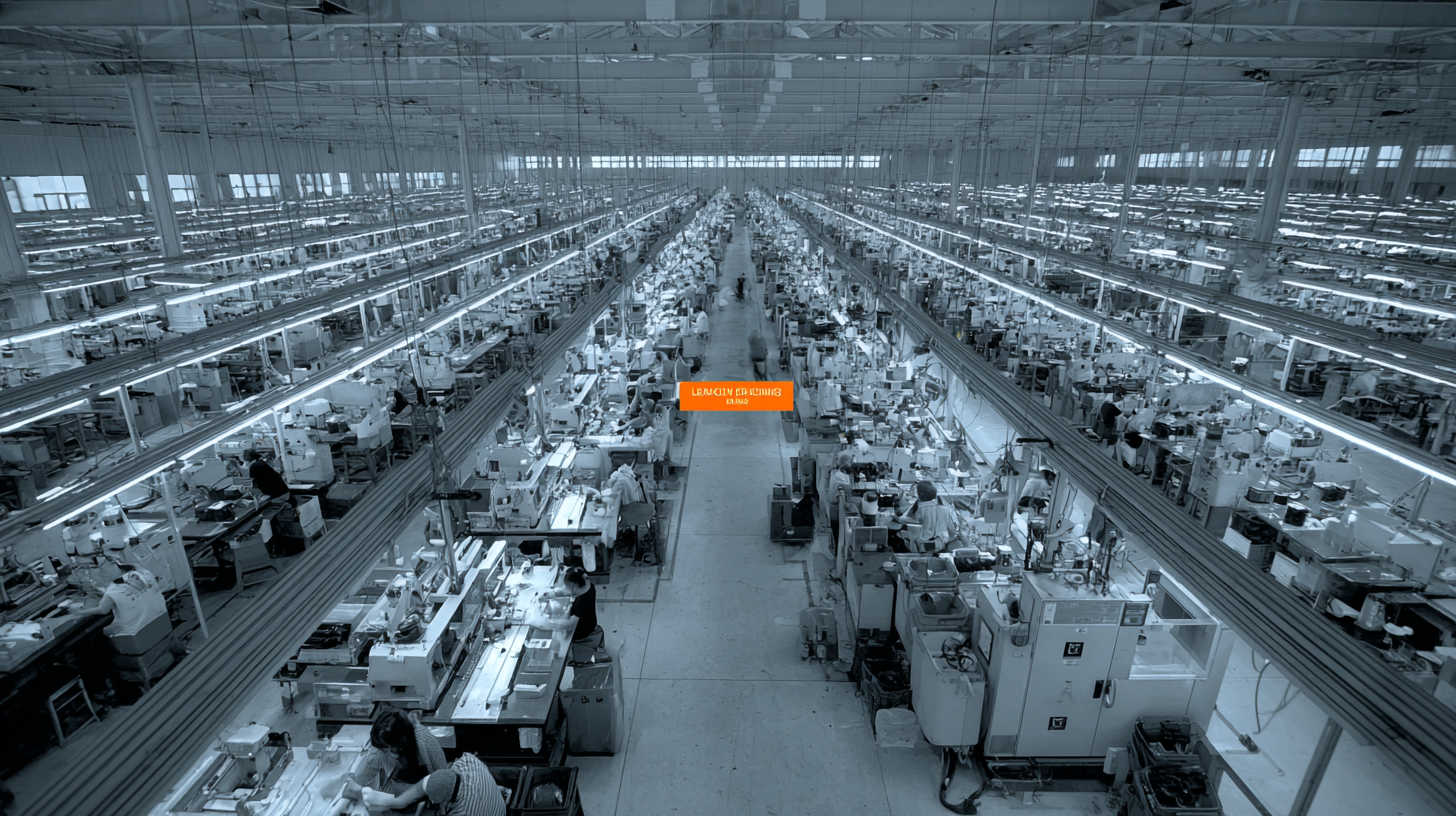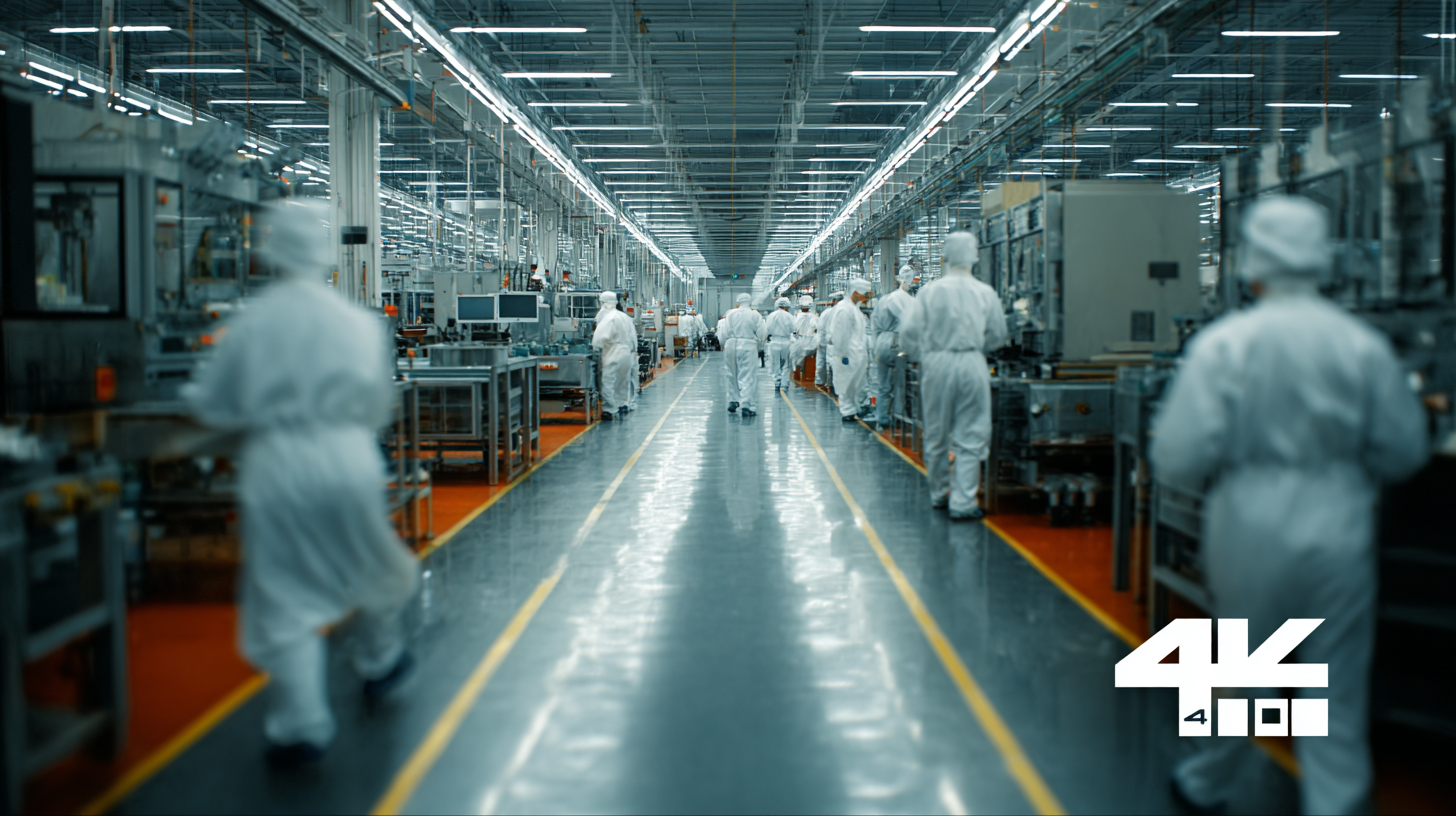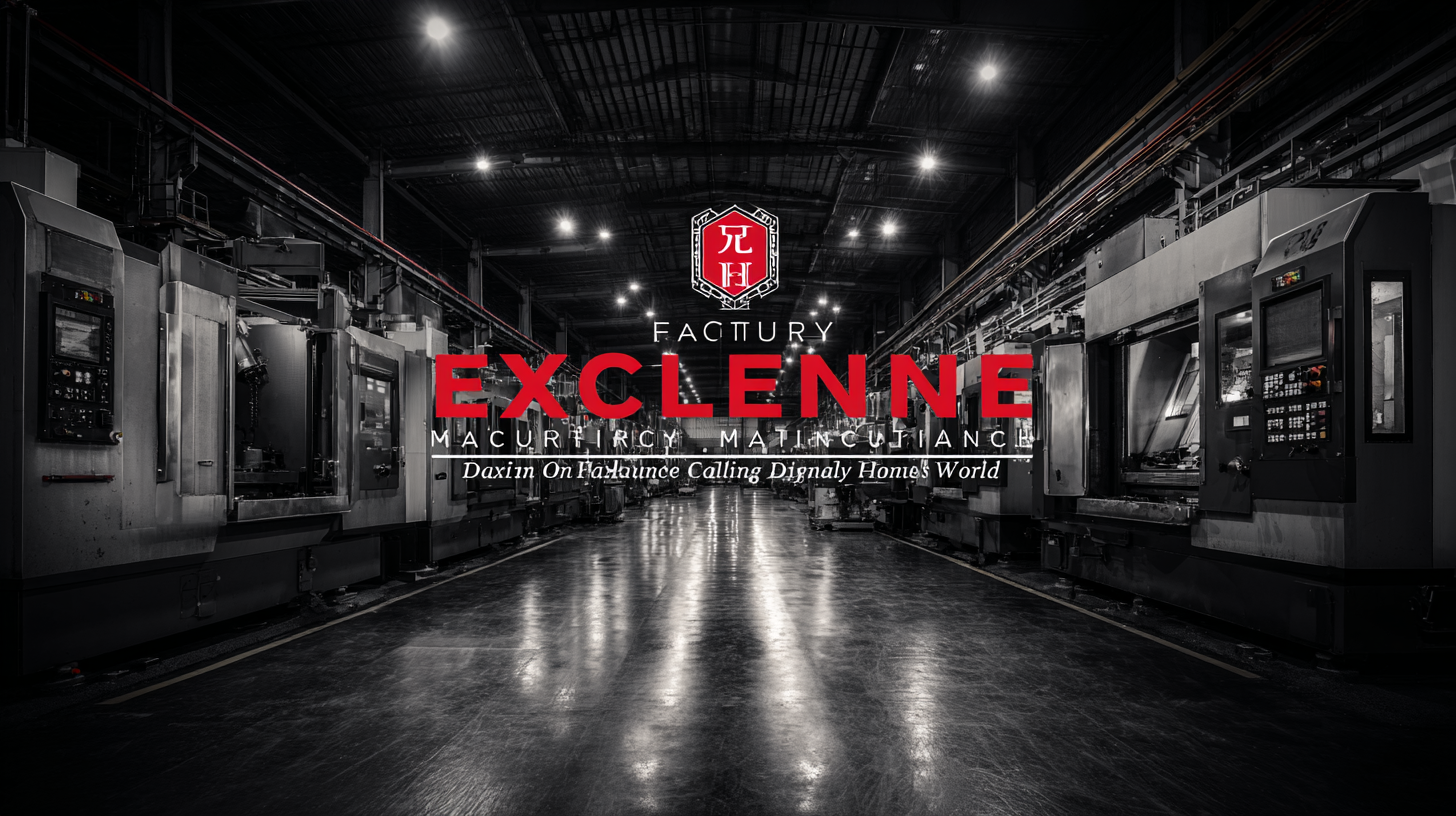
Excellence in Manufacturing from China Delivering Quality to the World
In recent years, China's manufacturing sector has emerged as a global powerhouse, positioning itself as the leading factory for quality production across various industries. According to the National Bureau of Statistics of China, the country accounted for approximately 28% of the world's manufacturing output in 2022, driven by advancements in technology and a skilled workforce. This impressive statistic underscores China's commitment to excellence and innovation, enabling it to deliver high-quality products to an increasingly discerning global market. The transformation of China's manufacturing landscape is not merely a response to domestic demands but is also deeply intertwined with global supply chains, as countries around the world increasingly rely on Chinese factories for their manufacturing needs. As we delve into the pivotal role that China's manufacturing strength plays in the global economy, it becomes evident that the future of quality production lies within its factories.

The Global Impact of Chinese Manufacturing Excellence
Chinese manufacturing has evolved into a powerhouse that significantly influences global supply chains, showcasing an impressive blend of quality and efficiency. According to a report by McKinsey, China accounted for nearly 30% of global manufacturing output in 2021, marking a substantial rise from previous decades. The country has successfully adopted advanced technologies such as automation and artificial intelligence, which have greatly enhanced production capabilities and quality control. With constant innovations, Chinese manufacturers are setting higher benchmarks for quality, thereby impacting international markets and consumer expectations.
Tip: To leverage the advantages offered by Chinese manufacturing, businesses must prioritize collaboration with reputable suppliers who adhere to international quality standards. Conducting thorough audits and assessments can help mitigate risks and ensure compliance with global benchmarks.
Moreover, China's commitment to sustainable practices is reshaping its manufacturing landscape. The implementation of eco-friendly processes not only reduces environmental impact but also aligns with the rising consumer demand for sustainable products. A report by the World Economic Forum highlights that over 70% of manufacturers in China have begun to integrate green technologies into their operations, reflecting a strong focus on quality and sustainability.
Tip: Companies looking to engage with Chinese manufacturing should consider incorporating sustainability into their agreements, which not only fosters responsible production but also appeals to the growing segment of eco-conscious consumers.

Quality Assurance Practices in China's Manufacturing Sector
The manufacturing sector in China has long been recognized for its vast output and critical role in the global supply chain. However, what stands out increasingly today is the emphasis on quality assurance practices that ensure products meet international standards. According to a report by Allied Market Research, the global quality assurance market is projected to reach $80 billion by 2027, driven significantly by advancements in manufacturing practices in China. This reflects the growing importance of quality in both domestic and export goods.
In China, various methodologies are employed to improve quality assurance, such as Six Sigma and Total Quality Management (TQM). A study from McKinsey revealed that companies leveraging these strategies have seen defect rates drop by over 50%, which significantly boosts their competitiveness on a global scale. Moreover, the implementation of strong regulatory frameworks aligns with international quality standards, enhancing consumer confidence and positioning Chinese manufacturers as reliable suppliers. This focus on quality not only helps firms to reduce waste and improve efficiencies but also supports the nation’s commitment to sustainable industrial practices, ensuring that excellence in manufacturing continues to deliver quality products worldwide.
Excellence in Manufacturing from China Delivering Quality to the World - Quality Assurance Practices in China's Manufacturing Sector
| Quality Assurance Practice | Description | Implementation Rate (%) | Impact on Quality |
|---|---|---|---|
| Six Sigma | A set of techniques and tools for process improvement. | 75% | Reduces defects and improves efficiency. |
| ISO 9001 | International standard that specifies requirements for a quality management system. | 85% | Enhances customer satisfaction through consistent quality. |
| Statistical Process Control (SPC) | Using statistical methods to monitor and control a process. | 70% | Maintains consistent performance and prevents defects. |
| Total Quality Management (TQM) | An organization-wide approach to continuous improvement. | 65% | Fosters a culture of quality throughout the organization. |
| Quality Audits | Systematic examination of a quality system. | 80% | Identifies areas for improvement and ensures compliance. |
Cost Efficiency and Competitive Pricing in Chinese Manufacturing
China has long been a dominant force in global manufacturing, celebrated for its ability to produce high-quality goods at competitive prices. However, the landscape is shifting as rising tariffs and labor costs challenge China’s traditional advantages. For instance, recent tariff hikes, which have reached as high as 28.7% on specific apparel categories, are eroding China's price competitiveness in the U.S. market, leading many businesses to reconsider their sourcing strategies.
Countries like Vietnam are emerging as viable alternatives, capitalizing on lower labor costs and increased investments in high-tech manufacturing. Reports indicate that Vietnam’s manufacturing sector is growing rapidly, positioning itself as an attractive choice for companies seeking to mitigate risks associated with over-reliance on China. The push for cost efficiency and competitive pricing is now prompting manufacturers to evaluate their supply chains more critically, emphasizing the importance of diversifying sourcing locations.
In response to these evolving dynamics, Chinese manufacturers are enhancing their production efficiency and technological capabilities. By leveraging innovations in supply chain management and manufacturing processes, they aim to maintain their global edge. This strategic focus on cost reduction and quality improvement highlights China’s continued commitment to delivering excellence in manufacturing, despite the increasing competition from neighboring countries.
Technological Innovations Driving Quality in Chinese Factories
In recent years, Chinese manufacturing has transformed dramatically, with technological innovations at the forefront of this evolution. The rapid integration of automation, AI, and IoT in factories has not only enhanced production efficiency but has also significantly improved product quality. Smart manufacturing systems enable real-time data collection and analysis, allowing factories to quickly identify and rectify issues, thus minimizing defects and ensuring that the final products meet global standards.
Moreover, investments in research and development have propelled Chinese companies to the forefront of technological advancements. Many firms are adopting advanced manufacturing technologies, such as 3D printing and robotics, to streamline their processes. This shift not only fosters a culture of innovation but also allows for greater customization and flexibility in production. As a result, Chinese manufacturers are not just delivering large quantities of goods; they are also providing high-quality products that cater to the specific needs of consumers around the world. This commitment to excellence positions China as a key player in the global manufacturing landscape.

Sustainability Trends in Chinese Manufacturing for Global Markets
Chinese manufacturing is at the forefront of global sustainability trends, leading the charge in the green transition. As the country rapidly develops new industries and build cutting-edge energy infrastructure, it is setting an unprecedented pace that is capturing the world's attention. The Shanghai Auto Show 2025 highlighted the expansion of range extender electric vehicles, reflecting a growing commitment to innovation in the automotive sector that not only meets domestic needs but also caters to global markets.
Furthermore, China's focus on sustainability is evident in its chemical industry outlook, which emphasizes innovation and resilience. This shift towards eco-friendly practices is pivotal as the world grapples with climate change challenges and the automotive industry's evolution towards electric vehicles. While China faces pressures such as industrial overcapacity and competition, its ability to adapt and innovate positions it well in the global marketplace. The collaboration with international firms and investments in advanced manufacturing technologies will ensure that China's impact on sustainable development resonates well beyond its borders, providing opportunities for partners worldwide.
